Movies In The Time of World Wide Pandemic
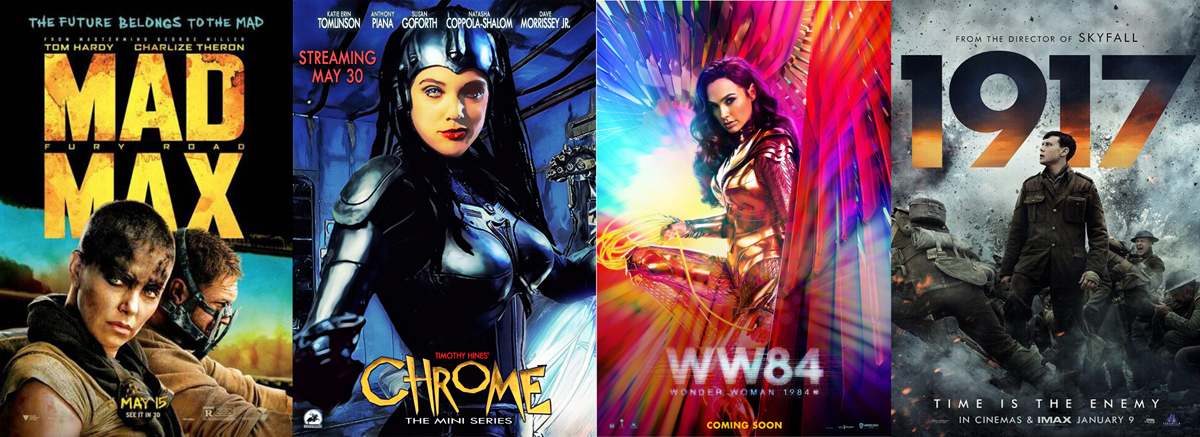
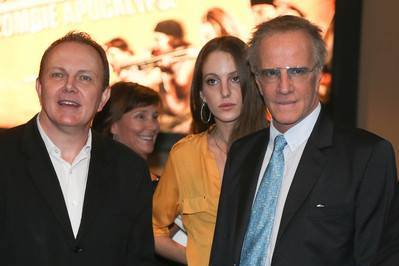
Above: Director Timothy Hines, Eleanor Lambert and Christopher Lambert attend the New York Premiere of 10 DAYS IN A MADHOUSE at AMC Empire in New York City.
Essay by Timothy Hines, director of 10 Days in a Madhouse, War of the Worlds The True Story, Chrome: The Series.
Every writer for movies and TV is finding themselves at a unique and daunting crossroad creatively as a direct result of COVID-19 that is going to change the face of drama for perhaps many years to come.
This change is nearly as formidable to storytelling as when sound was added to silent movies, creating a whole new ballgame for how movies were made and perceived.
Let me explain. I have a screenplay for a film I’ve been mounting that involves action on a commercial airline packed with people shoulder to shoulder. This opening sequence is the first 20 minutes of the movie.
There is simply no way this story can be told without drawing the audience out of the film to reflect in their minds on the current pandemic situation as they are watching the movie. At the time of this writing, 95% of the airlines are grounded and those remaining are only supporting a 30% capacity.

Due to the need for social distancing, being packed in a plane is clearly not the safest place to be. Even though the air is completely circulated several times an hour, (increased now on planes), you are still potentially breathing some of what other passengers are breathing. There is no avoiding that air coming into your lungs had at least in portion possibly been in the lungs of your seat mates.
In pre-COVID-19 times planes were always loosely known as a source of the spread of virus and disease, but we often took the risk in order to travel 1000s of miles in hours, as opposed to days on the ground or weeks by water. Most of what you could catch might make you sick but would for the most part, not potentially kill you.
So now things have changed, everyone knows people aren’t flying in the same numbers as before. it would be impossible to watch a scene of a plane packed with people and not think about the lack of social distancing.

Photo by John Mark Smith from Pexels.
Likewise any scene in a crowded mall, an auditorium filled with concert goers, people dancing closely in nightclubs, busy restaurants with tables two or three feet apart, etc., will easily take the viewer away from the story at hand and cause their minds to wander — to ask questions, to leave the story.

Photo by Jonannes Rapprich from Pexels.
In a smaller sense, it happened before. Me and my creative partner, producer Susan Goforth were about to shoot a movie version of War of the Worlds in 2001 when the September 11th World Trade Center attacks occurred. My film, which several years before the Spielberg film was to be an updated version with buildings blowing up and planes falling out of the sky.
I had to shelve the film and when I finally remounted it, I did it as a period picture, that on the first pass turned out disastrously, but finally became War of the Worlds The True Story that competed in an Academy Awards, played coast to coast in theaters in the US, sold 7 million DVDs at Walmart and is generally lauded by critics and fans. But at the time, there was no way I could make such a film without the audience thinking of nothing but the trade center attacks.
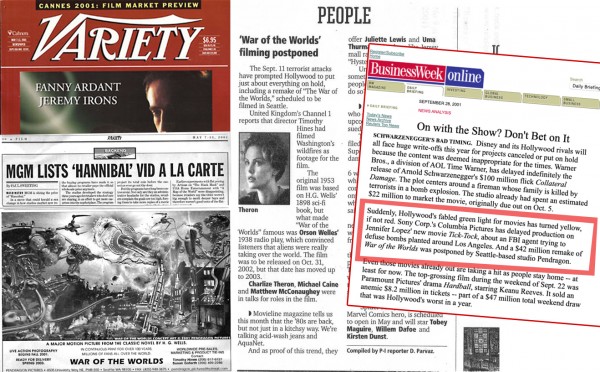
Above: Pendragon Pictures’ production of War of the Worlds was delayed due to the tragedy of September 11th, 2001.
Likewise my movie opening on the airliner has to be seriously rewritten to be filmable or shelved altogether.
And here is the real problem currently for screenwriters and filmmakers. Most people don’t know there is a long lead time to making a quality movie. Though some films are rushed out to take advantage of a topical event, most movies take two or three years from concept to the screen.

Weeks or months to write the screenplay, months to finance, cast the picture, design and physically create the costumes, sets, props, develop the artistic look of each individual film. Then the actual live action shooting of the movie can take from a few to many weeks. On top of this, there are invariably re-takes and insert shots to patch holes or “pickup” moments that were missed in the sometimes nearly overwhelming complexity of the original filming.
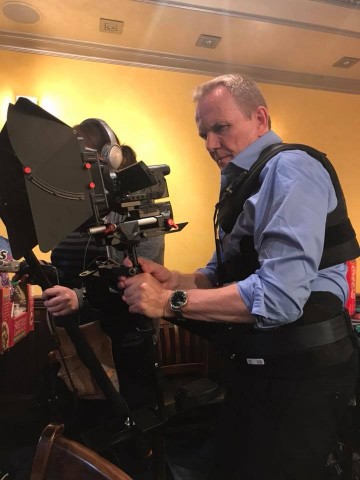
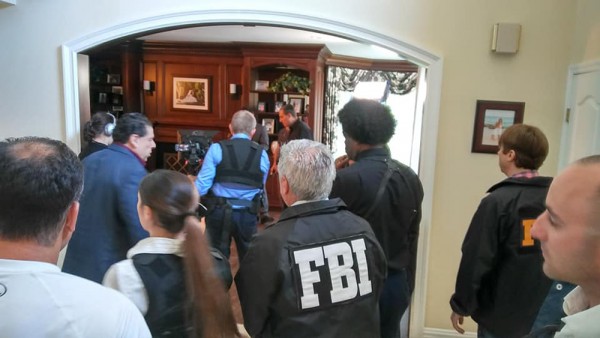
Above: Timothy Hines directing a scene from his upcoming Charlie Boy starring Greg Kritikos, Joanne Scorcia with Kelly Le Brock and Academy Award Nominee Burt Young.
Below: Comedian turned movie star Greg Kritikos and legendary Burt Young in a scene from Charlie Boy:
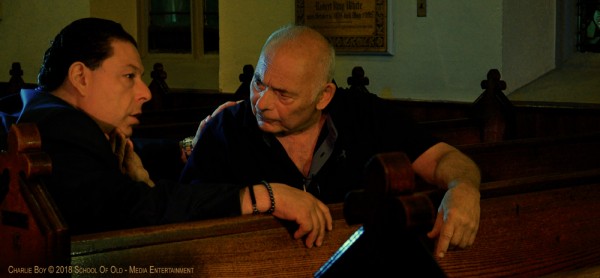
And finally post production. Editing has to produce a rough cut, and many stages to get to a final cut. The sound editing and mixing can only go so far in being simultaneous with the visual editing. Then overdubbing, the placing of sound effects and sound replacement of location sound that missed audio detail, or the original sound qualities didn’t live up to the vision of the creative artists.
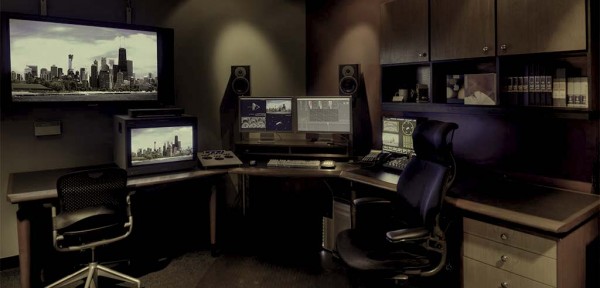
Then music has to be designed, performed, recorded and cut in. Granted some of this can be at-the-same-time-as, but not entirely. Lastly, comes the color timing, where a color artist like the legendary Marc Wielage who worked on the Star Wars Series and my film 10 Days in a Madhouse amongst a gigantic body of work will step in, usually working hand in hand with the cinematographer or director, to adjust exposure and color from shot to shot.
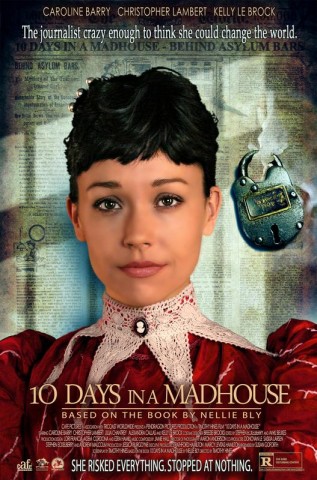
Timothy Hines’ 10 Days in a Madhouse, (Universal Home Entertainment, Broadgreen, Tricoast).
This is not only removing the jarring mix of exposures of sequences shot out of order, but to ad the final important layer of artistic choice to the picture, as in, whether the film has a cool washed out look like the Alaskan adventure Togo starring Willem Dafoe or a movie with colors on fire like Mad Max Fury Road or my Chrome the Series.
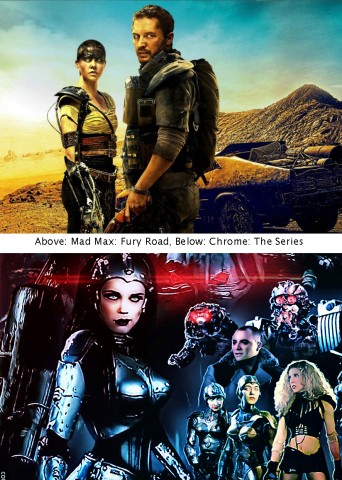
The final product is shrink-wrapped with the credit sequences. For features this can be an entire mini movie at the end of the film and in more simple cases, names of the talent floating over the action at the beginning and the inevitable role credits at the end.
Needless to say, this doesn’t all happen overnight. In normal times, the couple of year lead is generally not significant in relation to changing world events, meaning, the world just doesn’t move that fast. But sometimes, events on the planet can affect the release of a movie or stall its arrival out all together. As in the case of my eventual War of the Worlds The True Story.
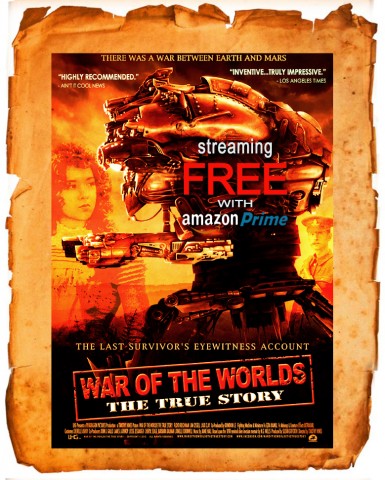
With the relatively sudden arrival of the coronavirus, for movie makers to tell stories that won’t feel out of date and quaint two or three years from now, we will have to know things like, will we be flying again packed in planes, riding closely to each other on buses, or sitting shoulder to shoulder in movie theaters?

Photo by Anna Shvets from Pexels.
And if we are, will we be wearing masks? Will the pandemic be over somehow? Will each person be scanned or tested at the entrance ways in a yet-to-be designed test similar to a five minute pregnancy test, like the antibody tests being promoted by politicians right now? Or will it be something so totally different that by the time the movie ideas of today are released onto the screen, will people be so heavily drawn out of whatever story they are watching as to ruin the movie?
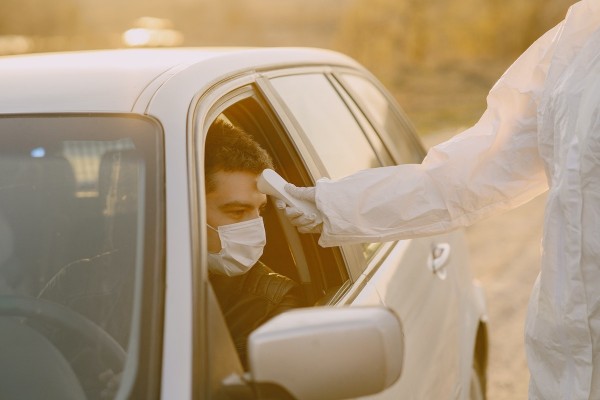
Photo by Gustavo Fring from Pexels.
Which brings us to futurists storytellers. Many of Aldous Huxley’s futurist predictions about totalitarian governmental control and mental manipulation of the masses through media in Brave New World have frighteningly come to pass, but his future had elevator operators, the existence of which all but fell away with advanced technology more than a half a century ago.
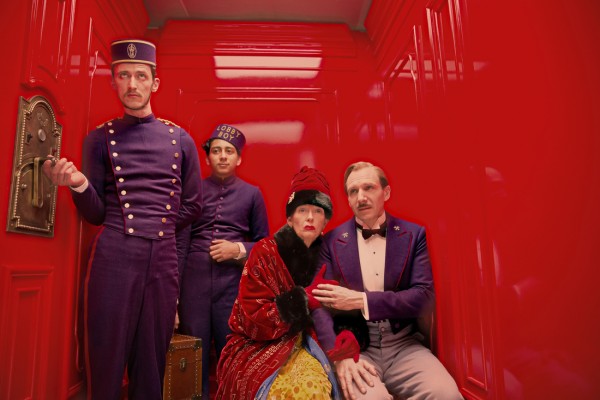
Above: Scene from The Grand Budapest Hotel with Ralph Fiennes and an elevator operator.
George Orwell’s 1984 was in many ways equally as predictive of things that have come but didn’t come to pass in the year 1984, causing many, sadly to discard the masterpiece.
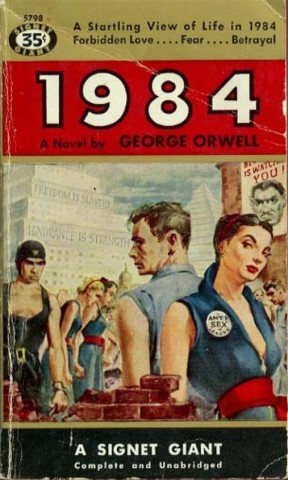
Mad Max The Road Warrior still holds up as simple graceful storytelling of a distopian world ruled by the struggle for fuel, but in this case, the writer director George Miller was wise not to display an exact date of when his future vision of world collapse actually takes place. This allowed him, nearly 30 years later to create a sequel, Mad Max Fury Road, that still is potentially sometime in our future, (hopefully not), but still possible.
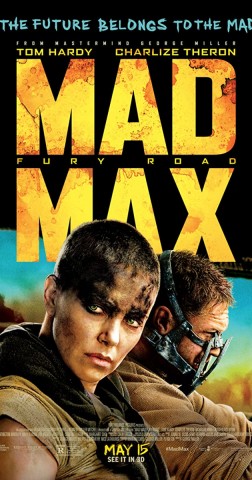
Above: George Miller’s Mad Max: Fury Road.
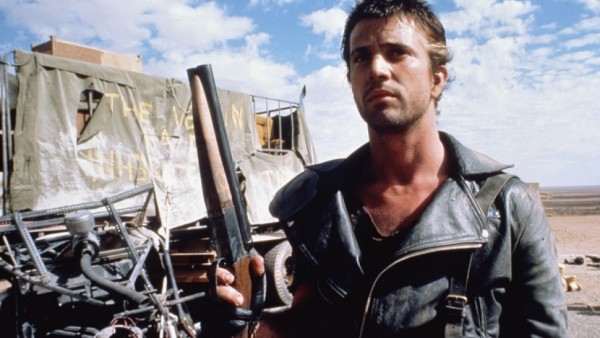
Above: George Miller’s Mad Max 2: The Road Warrior.
It is little known that when Miller filmed the movie in the late 70s, he, in his mind had set the original in the 90s. A smart choice to leave this notion out.
Conversely, the story in Ridley Scott’s Blade Runner is set in November 2019. This date has already come and gone and when I last looked I don’t see replicants filling the streets and flying cars dotting the city skies. Many have suggested that is why the studios created a sequel and deliberately added a far away date in the title Blade Runner 2049 to at the very least confuse audiences about the original’s expiration date.
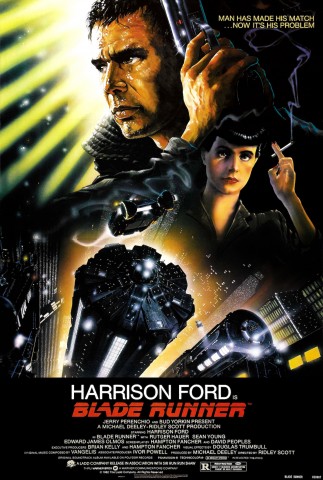
Ridley Scott’s Blade Runner
So as screenwriters pen stories that will not come to the screen for potentially two years, they better have a keen sense of the future, a sense even scientists, futurists and politicians are heavily struggling with. Or they can choose an indeterminate period of some time to come.
Stories set in an unidentified future or a future far from now, say a hundred years or more don’t have to address where things will be two years from now while being able to address current emotional dilemmas.
The other alternative is to set the story in the past. Very fortunate for the soon to be release Wonder Woman 1984 that crowd scenes will get a pass because it was a former time. Period films can show the way things once were without addressing how they are.

Above: Wonder Woman 1984
It is highly likely that the only kinds of movie storylines that won’t be potentially distracting in the current global pandemic are period movies and fantasy films. These were the movies that permeated the great depression of the 1930s, World War II, etc.; Shirley Temple films, The Wizard of Oz and Gone With the Wind.
Unlike with my War of the Worlds, I dodged a bullet with my mini series beginning May 30th, Chrome: The Series, where I set it in the year 2131. For my dystopian loose sequel to Metropolis, co-starring Natasha Coppola-Shalom, I envisioned a world were there are many advancements but also some things have reverted in a retro way. It was a lot of fun interacting with 1000s of artists who helped shape my world where a female robot slave breaks free of a human society of cruel masters to bring humanity back to them.
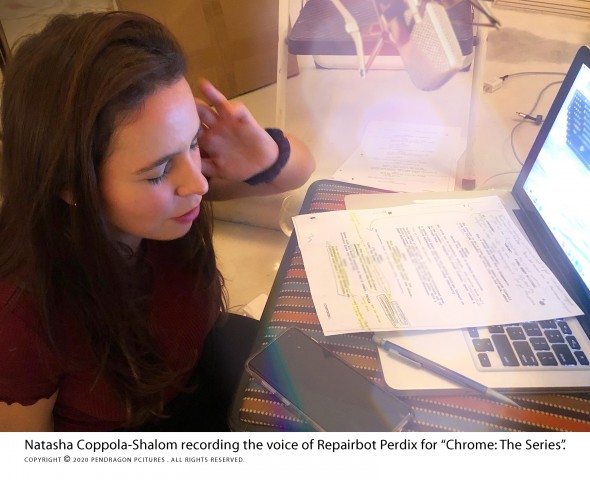
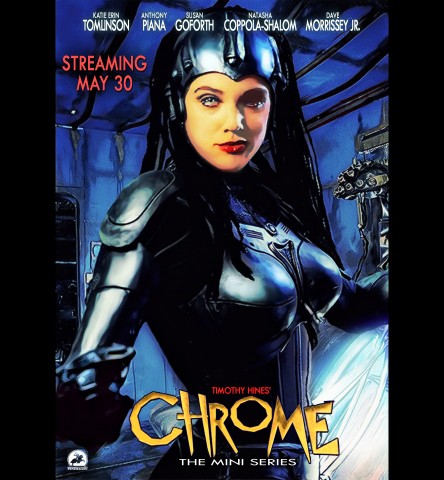
Our generation is facing times that our grandparents and their grandparents had to deal with, plagues and monolithic economic instability, but on a lighter note, where creativity lies, the reflection of our souls, it will be interesting to see how we all solve storytelling for those of us in our near, and inevitably changed future.
CHROME: The Series Official Trailer Video Link: https://www.youtube.com/embed/SplFH2Ek6k8
Facebook: @CHROMEtheseries
Twitter: @ChromeSeries
Vimeo: https://vimeo.com/ondemand/chromeseries
Website: http://www.pendragonpictures.com/CrmMain.html
YouTube Channel: https://www.youtube.com/channel/UCJ7m7sx-LYIwtbWFw3QnKrA
#ChromeSeries #Chrometheseries #ChromeMiniseries #PendragonPictures #TimothyHines #SusanGoforth #NatashaCoppolaShalom #FemaleSuperhero #FemaleLedMovie #Adventure #Action #Fantasy #Scifi #StreamingMay30
Media Contact
Company Name: Pendragon Pictures
Contact Person: Susan Goforth
Email: Send Email
Phone: 310-480-0837
City: Los Angeles
State: CA
Country: United States
Website: www.pendragonpictures.com



